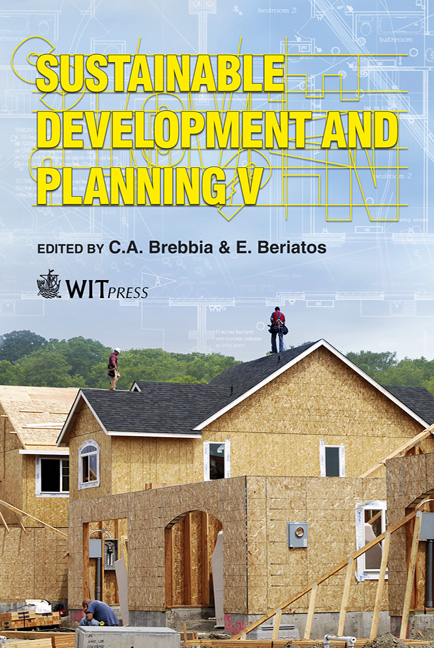A Study Of The Impacts Of Existing Artificial Optical Radiation At Student Housing Sites
Price
Free (open access)
Transaction
Volume
150
Pages
11
Page Range
249 - 259
Published
2011
Size
3508 kb
Paper DOI
10.2495/SDP110221
Copyright
WIT Press
Author(s)
P. Hebert
Abstract
Visible optical radiation in the housing sector accounts for 17% of the total energy consumed in the USA. Recommendations encourage the use of sustainable lighting to reduce energy consumption, but all stakeholders have not complied. Some existing installations provide high light levels, use inefficient lighting, and waste resources. Over-illuminated sites create light pollution and \“light trespass,” which may upset circadian rhythms and damage health. Some housing sites utilize short-lived light sources, which must be replaced often, sending solid waste to landfills. The invisible effects of artificial optical radiation, such as those from ultraviolet light (UV), may have adverse environmental and health impacts. In this study, researchers explored the quantitative aspects of artificial optical radiation found at five university student housing sites. They integrated technical literature and lighting industry recommendations with previous studies and new field measurements to raise awareness of environmental impacts and to ultimately encourage informed choices of sustainable lighting at student housing sites. The researchers led undergraduate students in night-time field studies to measure and document existing lighting conditions. They utilized various hand-held devices to measure and analyze visible light, UV light, and sky quality. Artificial optical radiation from various sources was in evidence at all sites. A review of the published standards revealed some of sites’ artificial light levels exceeded recommendations. Light pollution and light trespass were found. Sky quality was fair to poor. The environmental impact of UV radiation in the current study was found to be negligible. However, other measurable impacts produced by nonsustainable lighting sources, including wasted light, light pollution, and light trespass, are of concern to the environment and to housing stakeholders. Keywords: environmental impact, housing, lighting, pollution, sustainability.
Keywords
environmental impact, housing, lighting, pollution, sustainability.





